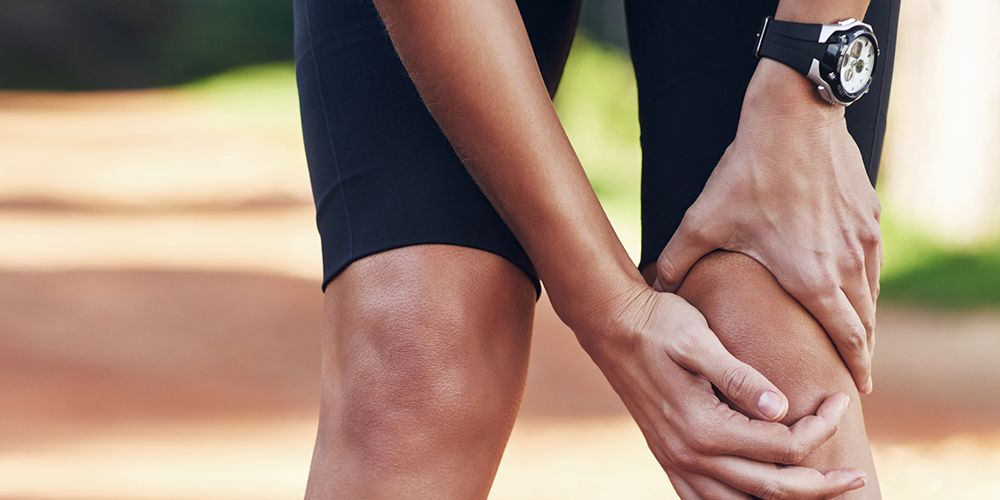
There are a number of assessment factors that can determine whether you do have Jumper’s Knee or Runner’s knee. At times, the severity of the condition will determine whether these tests are positive or not, however the tests below are a good indicator that you do in fact suffer from either of these conditions. It is always important to check with your physio to confirm the diagnosis.
These tests should provoke the pain that you have been feeling.
Jumper’s Knee
If you are suffering from Jumper’s Knee, these tests will provoke pain just below the knee cap (patella). You should be looking to provoke the same pain that you have been feeling.
1. Palpation
To be diagnosed with Jumper’s Knee you must have tenderness of palpation of the inferior pole of the patella. To test this, sit on a chair with your knee bent at 90 degrees. From here press down with your fingers at the base of the knee cap (see the image for clarification). If this reproduces the pain that you have been feeling then it is likely that you are suffering from Runner’s knee.
2. Single Leg Hop Test
Perform 5 hops on the spot with your affected leg. If this reproduces the pain in the same location as the palpation test above (pain just below the knee cap) then it is also likely that you are suffering from Jumper’s Knee.
3. High Step Up
Perform 5 step ups on a 45cm box with your affected leg up on the step. It is very important to place most of the weight on the leg on the step rather than letting the back leg assist you as you step up. If you perform the step up and it reproduces pain just under the knee cap then it is likely you are suffering from Runner’s Knee. You can also perform this test from a smaller step, however it may not reproduce as much pain.
Runner’s Knee
If you are suffering from Runner’s Knee, these tests will provoke pain around the knee cap (patella).
Assessing Runner’s Knee is much more difficult as there are many more factors that contribute to this injury. Always seek the help of your physiotherapist to fully assess this injury. Here are 3 tests to help with the assessment of Runner’s Knee.
1. Palpation
Palpating on the border of the patella and on the underside of the patella will be painful if you do suffer from Runner’s Knee. To test this sit on your bed or couch with your leg completely straight and relaxed. You will notice your knee cap is wobbly if you move it around. You can then press on the border of the knee cap. If you slightly move your knee cap to this side you will also be able to feel the underside of the knee cap. You should notice soreness as you are palpating along the knee cap if you are suffering from Runner’s Knee.
2. Quad contraction
As you are palpating the knee cap you can also test your quad contraction. Again, sit on your bed or couch with your leg straight. Squeeze your quadricep/thigh muscles so that your heel slightly lifts off the bed or couch. This should cause pain around the knee cap.
3. Forward step down
Most people with runner’s knee will feel soreness with going down stairs. This test best replicates that movement. Start this test on a step. Step down off the step with your unaffected leg. The higher the step, the harder it will be for your knee. If a small step does not reproduce your pain than try this test using a higher step. If positive, it should replicate pain around your knee cap.
These tests are only a quick self-assessment. There may be many factors contributing to your injury so please check with your physio for a full assessment, diagnosis and to determine a treatment plan.
Check out the next blog in this series Jumper’s Knee vs Runner’s Knee Part 3: Rehabilitation where we will go through a number of exercises for both Jumper’s Knee and Runner’s Knee. Also, to help clarify if you have Jumper’s knee versus other common causes of knee pain in runners, see our post on The Three Most Common Causes Of Knee Pain In Runners.
For more information please feel free to contact us, call us on 9280 2322 to chat to one of our physio’s, or book your appointment online.

